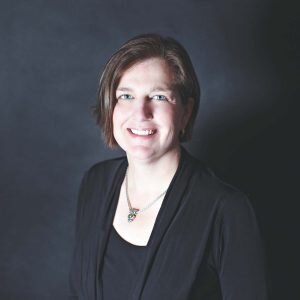By Morgan Pilz, Staff Writer
(Feb. 27, 2020) Two math teachers and the Coordinator of Instruction provided a presentation depicting how solving math problems mentally can create problem solving students during the monthly Worcester County Public Schools Board of Education meeting on Tuesday, Feb. 18.

Kirsten Danisavich
Coordinator of Instruction Kirsten Danisavich and math teachers Connie West and Regina Dashiell shared their findings on a program called Number Talks, which has a goal to create “numerically nimble students.”
“It means that they can take numbers apart and put them back together again,” Danisavich said. “They can decompose them and recompose them. That’s the foundation of algebraic reasoning.”
By talking about the numbers out loud to their peers, teachers hope students will be able to adapt faster at expressing how to solve the equations, which will make them better communicators, which also helps them become better writers.
This program, incorporated into grades kindergarten through 12th grade, spends 5-10 minutes of the classroom time working on a problem and developing the solutions.
Danisavich displayed some hand signals used to help keep all students accountable and participate in the activity so the problems are not always solved by the same students who always raise their hands.
The entire equation must be solved with mental math only, with no pen, pencils, paper or calculators to help. This is designed to help keep the students fluid with their facts.
“Students are presented with a problem and given time to develop an answer for it,” West said. “The teacher will present a problem and they are given quiet think time to develop their strategies.”
Once the think time is over, the teacher will poll from the students, who will then share their strategies with each other and explain their thought process on how they came up with that solution.
Once example provided during the presentation was a fourth-grade problem asking to solve 2,500×6. In a short video that showed student responses, one child showed their work by explaining that 2,000×6 equals 12,000; 500×6 equals 3,000; so, 12,000 plus 3,000 equals 15,000.
Each child must present their answer out loud to their peer, who can then agree or disagree with how they obtained their solution, and share their own solution back.
“Teachers build a culture of no one is smarter than all of us are together,” Dashiell said. “Some norms that the teachers set in place with their students are having respect for everyone’s ideas, setting up individual think time, allowing everyone to share with one another and leave no one behind.”
